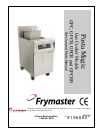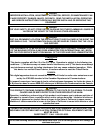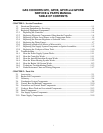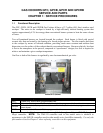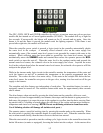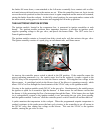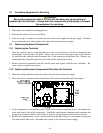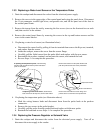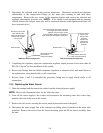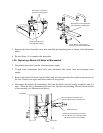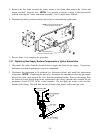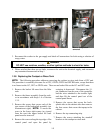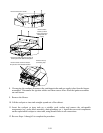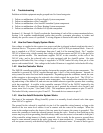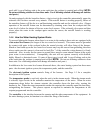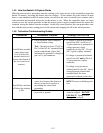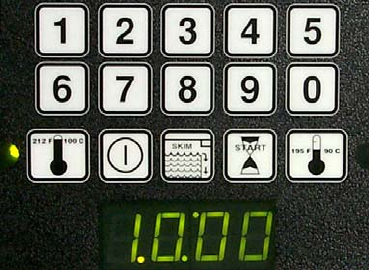
1-2
SMS III Controller
The GPC, GPCB, GPCR and GPCRB controllers do not have a ten-time warm up cycle as previous
models did, but instead use a Fenwal ignition module (807-4943). The module will try to light for
four seconds. If unsuccessful, the blower will remain on for 15 seconds and try again. Once the
burner is lit and the flame is proved, the module ends the lighting sequence. If the flame is not
proved after eight tries, the module will lock out.
When the controller power switch is pressed, a logic circuit in the controller automatically checks
the water level in the cookpot. A normally closed solenoid valve on the water supply line
automatically opens if the normal water-level sensor is not grounded by contact with water in the
cookpot. When sufficient water has been added to ground the low water-level sensor, the unit
automatically enters the SIMMER mode and remains there unless the operator presses the BOIL
mode switch or turns the unit off. When the water level in the cookpot reaches and grounds the
normal water-level sensor, the solenoid valve in the water supply line closes. Anytime the water
level in the cookpot drops below the normal water-level sensor, the solenoid valve opens to refill the
cookpot to the proper level.
While in the simmer mode, logic circuits in the controller monitor the temperature of the water and
cycle the burners on and off to maintain the temperature at the setpoint programmed into the
controller. The cooker also has a low-water safety. If the water in the cookpot falls below the low
water-level sensor, the controller cuts power to the gas valve, causing it to close and cut off the gas
supply to the burners.
The autoskim and skim features are independent of each other. The autoskim feature (on units so
equipped) cannot be turned off. The autoskim feature adds water for approximately three seconds
once a minute.
The skim feature, when activated by pressing the skim button on the controller, delivers a conti-
nuous spray of water for approximately two minutes, then stops until the button is again pressed. In
both cases, the purpose is to cause the water in the cookpot to overflow into the drain, carrying float-
ing starch with it. (A buildup of starch reduces the efficiency of the cooker and can cause erroneous
temperature and water level sensing.) NOTE: Do not use deliming solution to clean these units.
Use of deliming solution will damage all stainless steel parts.)
The operator enters a specified cooking time by pressing the number pads on the controller. When
the start switch is pressed, the controller begins to count down to zero. When the controller times
out, an alarm sounds briefly, then the timer reverts to the last time entered.
When the start switch is pressed to start the cooking cycle, logic circuits in the controller activate the
basket lift motors (on units so equipped), lowering the basket into the cookpot. As the motors drive



